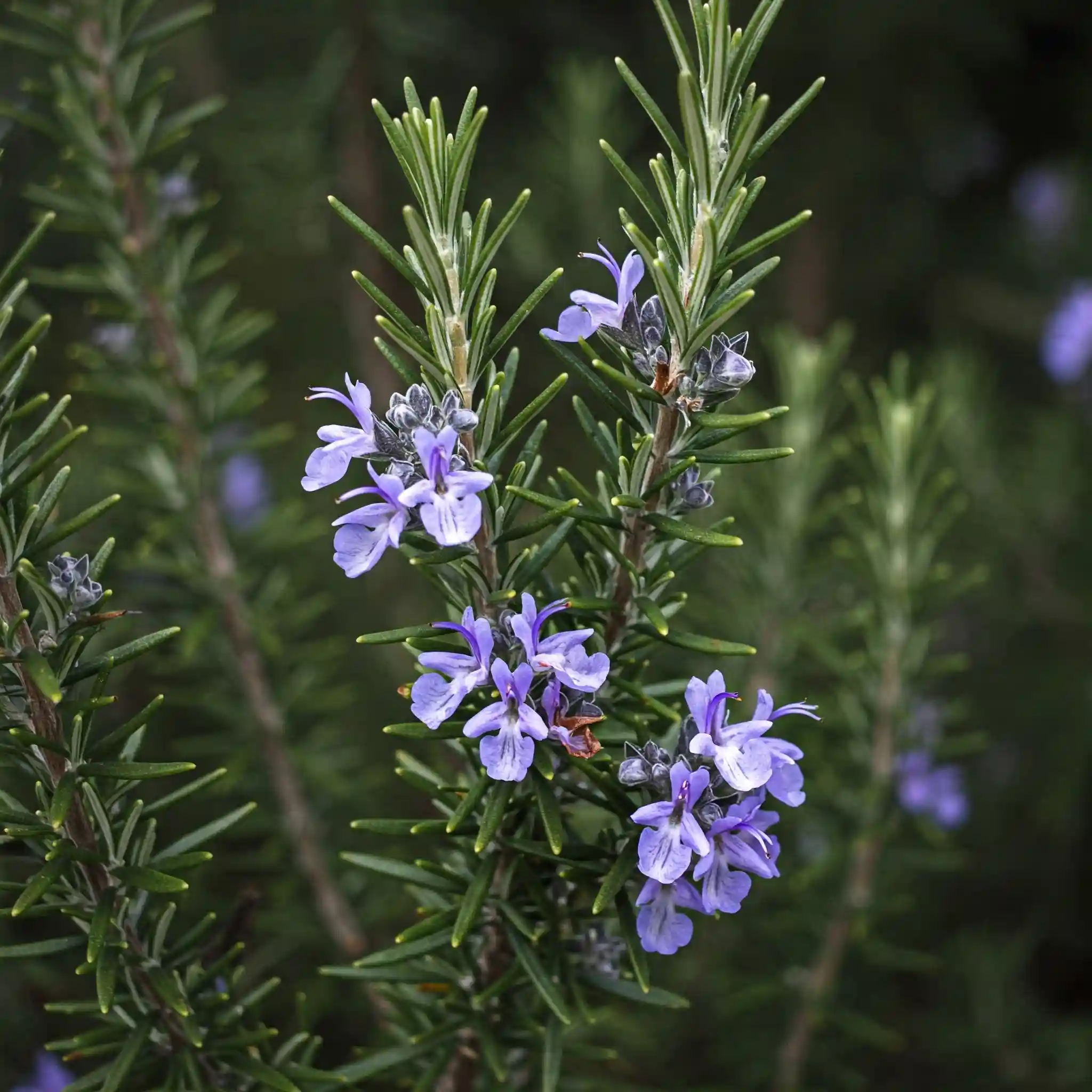Today, we’re spotlighting a woody plant that’s beloved not just for its unique scent but also for its many health benefits and the delicious flavor it adds to our food and drinks. It’s one of the most versatile plants we can have in our lives: Rosemary, or “Dew of the Sea” in Latin.
Native to the Mediterranean, rosemary can grow anywhere from 2 feet to 5 feet tall. Its leaves are small, needle-like, and dark green on top with a whitish underside. While it’s often pictured without flowers, rosemary can bloom in beautiful shades of blue, violet, pink, or white.
Rosemary has a rich history. Dating back over 5,000 years, it was used by ancient civilizations like the Egyptians, Greeks, and Romans. One of the most famous advocates of rosemary was Hippocrates, the “father of medicine.” He used rosemary in various treatments, including for:
- Improved memory and concentration: Rosemary was used in ceremonies and studies because it was believed to boost memory. Modern research has confirmed these benefits, showing that exposure to rosemary’s essence can enhance memory recall.
- Antioxidant properties: While Hippocrates didn’t know the term “antioxidant,” he recognized rosemary’s ability to promote health. Today, we know that rosemary is packed with antioxidants like rosmarinic acid, carnosol, and eucalyptol, which help fight inflammation and protect cells from damage.
- Better digestion: Hippocrates recommended rosemary as a remedy for indigestion, colic, and gas. Modern research supports his claims, suggesting that rosemary’s anti-inflammatory properties can soothe the digestive tract.
But the benefits of rosemary don’t stop there. Rosemary tea and essential oil have also been shown to be helpful for conditions like inflammation, diabetes, and heart disease.
Recent studies have even found that rosemary may have anticancer properties. Compounds in rosemary can inhibit the growth of tumors in organs like the colon, liver, and stomach. While more research is needed, rosemary shows promise as a natural way to help prevent cancer.
Beyond its health benefits, rosemary has many other uses. It’s used as a food preservative, in cosmetics, and in aromatherapy. It’s even a natural insect repellent!
Isn’t rosemary amazing? If you’re interested in growing your own, check out our article ‘Horticulture for Our Souls and Bellies’ for more tips.
References:
O.V. Filiptsova, & AbstractT The essential oil of rosemary and its effect on the human image and numerical short-term memory. (2017, May 8). Egyptian Journal of Basic and Applied Sciences. https://www.sciencedirect.com/science/article/pii/S2314808X16301890
Ribeiro-Santos, R., Carvalho-Costa, D., Cavaleiro, C., Costa, H. S., Albuquerque, T. G., Castilho, M. C., Ramos, F., Melo, N. R., & Sanches-Silva, A. (2015). A novel insight on an ancient aromatic plant: The rosemary (Rosmarinus officinalis L.). Trends In Food Science & Technology, 45(2), 355-368. https://doi.org/10.1016/j.tifs.2015.07.015
Ngo, S. N. T., Williams, D. B. y Head, R. J. (2011). Rosemary and Cancer Prevention: Preclinical Perspectives. Critical Reviews in Food Science and Nutrition, 51(10), 946–954. https://doi.org/10.1080/10408398.2010.490883











